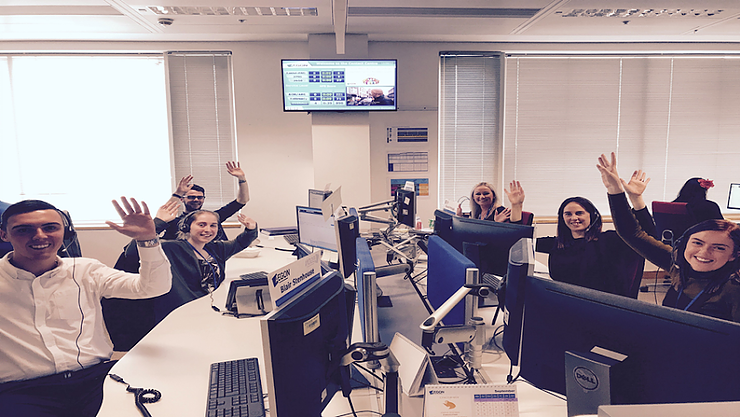Photo by Jay Wennington on Unsplash
Customer experience is the key differentiator in a landscape of ultra-connected users and over-saturated choice. The Net Promoter Score (NPS) has become the staple measurement of customer experience, and can be boosted using behavioural science. From navigating complex customer journeys to consolidating crucial relationships with customers, behavioural science can help you to improve your net promoter score and run a successful contact centre.
What is NPS?
NPS is a globally recognised measure of customer loyalty and satisfaction, coherently captured into a single-source metric. Importantly, NPS is not just another industry buzzword or inconsequential acronym but is regularly linked with business growth and subsequently a metric companies strive towards. Despite the all encompassing nature of customer service, NPS fundamentally boils down to whether customers will recommend your company to a friend. Customers are required to rate their recommendation from 0-10, separating customers into.
-
Promoters (ratings of 9-10)
-
Passives (ratings of 7-8)
-
Detractors (ratings of 0-6)
Promoters are the holy grail of customer experience, championing your company’s service and brand, activating potential customers. Marginal differences in NPS ratings are crucial to a company’s performance as high scores are linked to increased revenue, higher retention and strong customer advocacy. Given that such a powerful indicator of a company’s performance is placed in the hands of the customer, it is paramount that their needs are at the forefront of every interaction.
How can behavioural science bump up NPS?
A behavioural approach places your customer firmly at the centre of your customer experience. Mental shortcuts and biases in customer decision-making can be used to make interactions simple, rewarding and reassuring. Drawing from well-established knowledge about how our brains make decisions, cognitive biases can be used to fundamentally improve the customer experience. By removing isolating jargon and embedding behaviourally-informed language, companies are able to improve understanding, increase decision-making confidence and, in turn, impact NPS.
Try using these behavioural biases to increase NPS
Cognitive Overload
People prefer tasks that require less effort as too many options can cause customers to avoid decision-making for fear of not making the best choice (Iyenger & Lepper, 2000). As such, companies must consider the amount and type information presented to avoid overly technical information negatively impacting the overall experience. Grouping similar action points together increases processing fluency, ensuring the customer conversation requires minimal mental effort and flows in an optimal order (Alter et al., 2009). Specifically, chunking information into three manageable parts is a compelling tool to remove cognitive friction. This is a key part of creating positive interaction impressions, converting your average customers to loyal advocates. Companies are able to instil confidence in a customer by distilling complex information into a digestible format, improving the overall quality of the interaction.
Photo by Adam Wilson on Unsplash
Framing:
How options are presented significantly impacts our behaviours (Tversky & Kahneman, 1981). The ‘Peak-End’ heuristic (Kahneman et al., 1993) demonstrates that companies should always end interactions on a positive note, as the conclusion determines the positivity customers ascribe to the interaction. Also, customers care less about features than benefits, so in order to boost NPS companies should draw attention to how their service enhances a customer’s life rather than the specific attributes it offers. For example, drawing out how a service may save them time more effectively demonstrates value than underlining the latest available add-on.
Photo by pine watt on Unsplash
How we helped Aegon to boost NPS using behavioural science
Aegon wanted to transform their contact centre conversations using behavioural science, tapping into human psychology to identify the pain-points in their current exchanges between customer and agent, and translate these into genuinely enjoyable interactions. Having identified that they needed to overhaul their telephone interactions, we helped Aegon conduct an audit of their existing call scripts, optimising the content to remove the jargon and make the dialogue more human. For example, we reduced cognitive overload by chunking the information into manageable stages, knowing that people would be more likely to follow the call if it was broken down into discrete components.
This change, amongst others, lead to record-breaking NPS scores and happier call agents.

The Team at Aegon improved NPS using behavioural science
Behavioural science should be in the toolkit of every company who wants to deliver the highest levels of customer service. Want to join our clients who are already reaping the benefits, such as Aegon, Fidelity, Quilter and Saga? Get in touch today.
References:
Alter, Adam L, and Daniel M Oppenheimer. “Uniting the tribes of fluency to form a metacognitive nation”. Personality and Social Psychology Review 13.3 (2009): 219-235.
Benartzi, S. & R. Thaler (2007). Heuristics and biases in retirement savings behavior. Journal of Economic Perspectives, 21, 81-104
Ellseberg, D. (1961). Risk, Ambiguity, and the Savage Axioms. Quarterly Journal of Economics, 75 (4) 643–669.
Iyengar, S.S., & Lepper, M. (2000). When Choice is Demotivating: Can One Desire Too Much of a Good Thing? Journal of Personality and Social Psychology, 79 (6), 995-1006.
Kahneman, D., Fredrickson, B. L., Schreiber, C. A., & Redelmeier, D. A. (1993). When more pain is preferred to less: Adding a better end. Psychological Science, 4, 401-405.
Langer, E., Blank, A., & Chanowitz, B. (1978). The mindlessness of Ostensibly Thoughtful Action: The Role of “Placebic” Information in Interpersonal Interaction. Journal of Personality and Social Psychology, 36(6), 635-642.
Milgram, S. (1963). Behavioral study of obedience. The Journal of Abnormal and Social Psychology, 67 (4), 371.
https://www.netpromoter.com/about-net-promoter/
Reichheld, Frederick F. (2003), “The one number you need to grow.,” Harvard business review, 88 (12), 46–54.
Tversky, A., & Kahneman, D. (1981). The framing of decisions and the psychology of choice. Science, 211 (4481), 453-458.
Underwood, G., & Foulsham, T. (2006). Visual saliency and semantic incongruency influence eye movements when inspecting pictures. The Quarterly journal of experimental psychology,59(11), 1931-1949.

